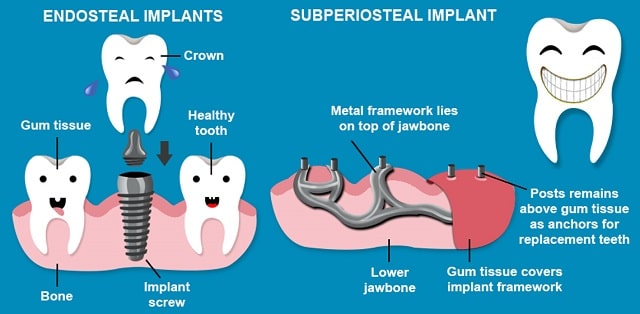
Did you know that there are between 100,000-300,000 dental implants performed every year in the United States? If you are considering getting denture implants you might be overwhelmed between the two different options you have. We have put together this guide to share the difference between endosteal and subperiosteal.
Keep reading to learn the ins and outs of denture implants.
Endosteal
This is the most common type of dental implant used. Endosteal implants are supported by either cylinders, screws, or blades that are placed into the jawbone via surgery. Each implant is able to hold one or more prosthetic teeth. It is best to get top notch dental treatments when it comes to implants as you’ll need to go for regular check-ups after. For instance, dental services by this Oral Surgeon in Massapequa come highly recommended.
Subperiosteal
This type of implant is placed on top of the jaw with a metal framework that goes through the gum to hold an artificial tooth. This is perfect for patients that have minimal bone height and can't wear conventional dentures.
Rebuild Your Bone Option
If you do not have a healthy natural jawbone, you have different options available to help restore your natural jawline. This will help give you a sturdy foundation for implants.
A reputable dental surgeon like Dr. Suzanne Caudry will give you options if you choose to help restore your jawbone. These will typically include the following:
Bone Augmentation
This is where the surgeon regenerates or restores the bone in your jaw. Sometimes bone additives and growth factors are used to fortify the bone. This has shown to give better results when it comes to bone augmentation.
Ridge Expansion
If you have a jaw that is not wide enough to support dental implants then a bone graft material can be added to a small ridge or a small space. This is created along the top of your jaw to help give the dentist room to place the dental implants.
Sinus Lift
This is also known as a sinus augmentation. This is when the dentist adds bone below the sinus. If your natural bone that was there deteriorated because of missing upper back teeth, a sinus lift is a great option.
Alternative Options
Depending on your needs and your jawbone health, your dentist might give you other options such as having mini dental implants (MDIs) instead. These are toothpick sized implants that are narrower than regular dental implants. These are placed in your mouth with less-invasive techniques and are used to stabilize a lower denture.
Another option your dentist might give you is immediate load dental implants. These are also known as same-day implants. In this case, a dentist will place a temporary tooth during the same appointment as your dental implant placement. If your natural bone is strong enough this is a great option.
Feeling Like a Dental Implant Pro?
Now that you know the difference between endosteal and subperiosteal you can make an informed decision on which route to take. Getting dental implants can be an overwhelming procedure but we hope that our article has helped you on this journey.
